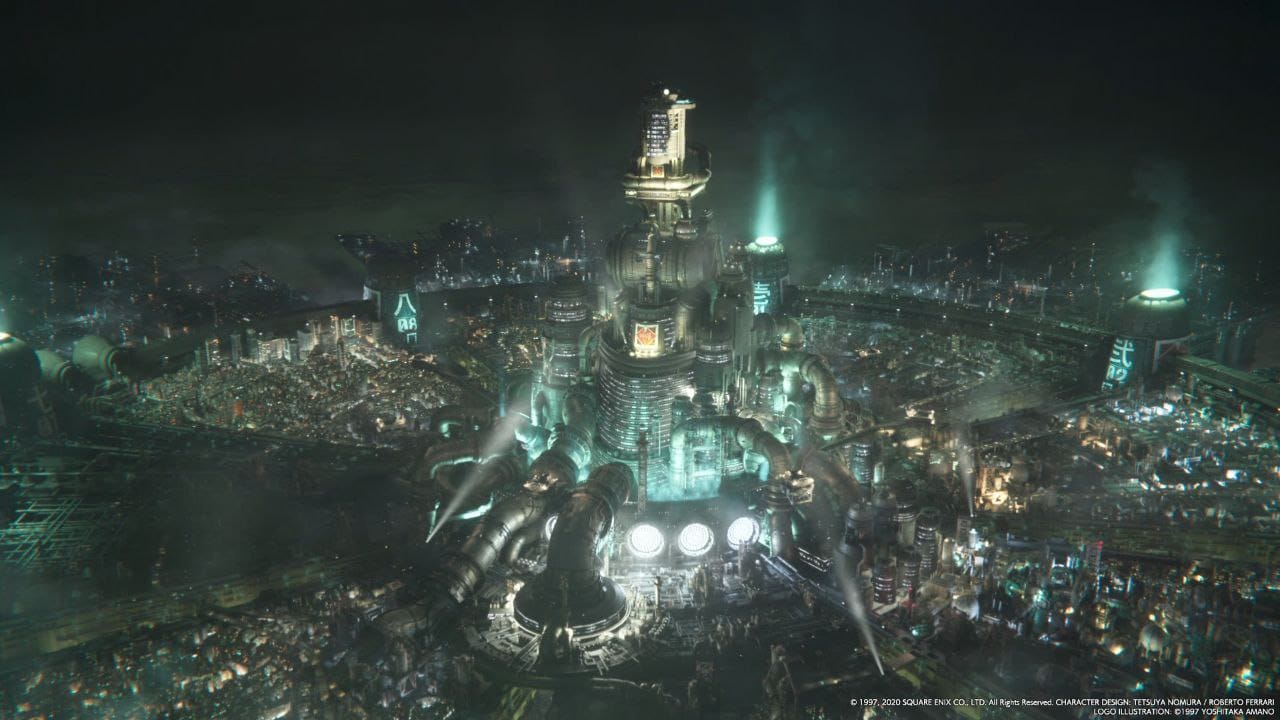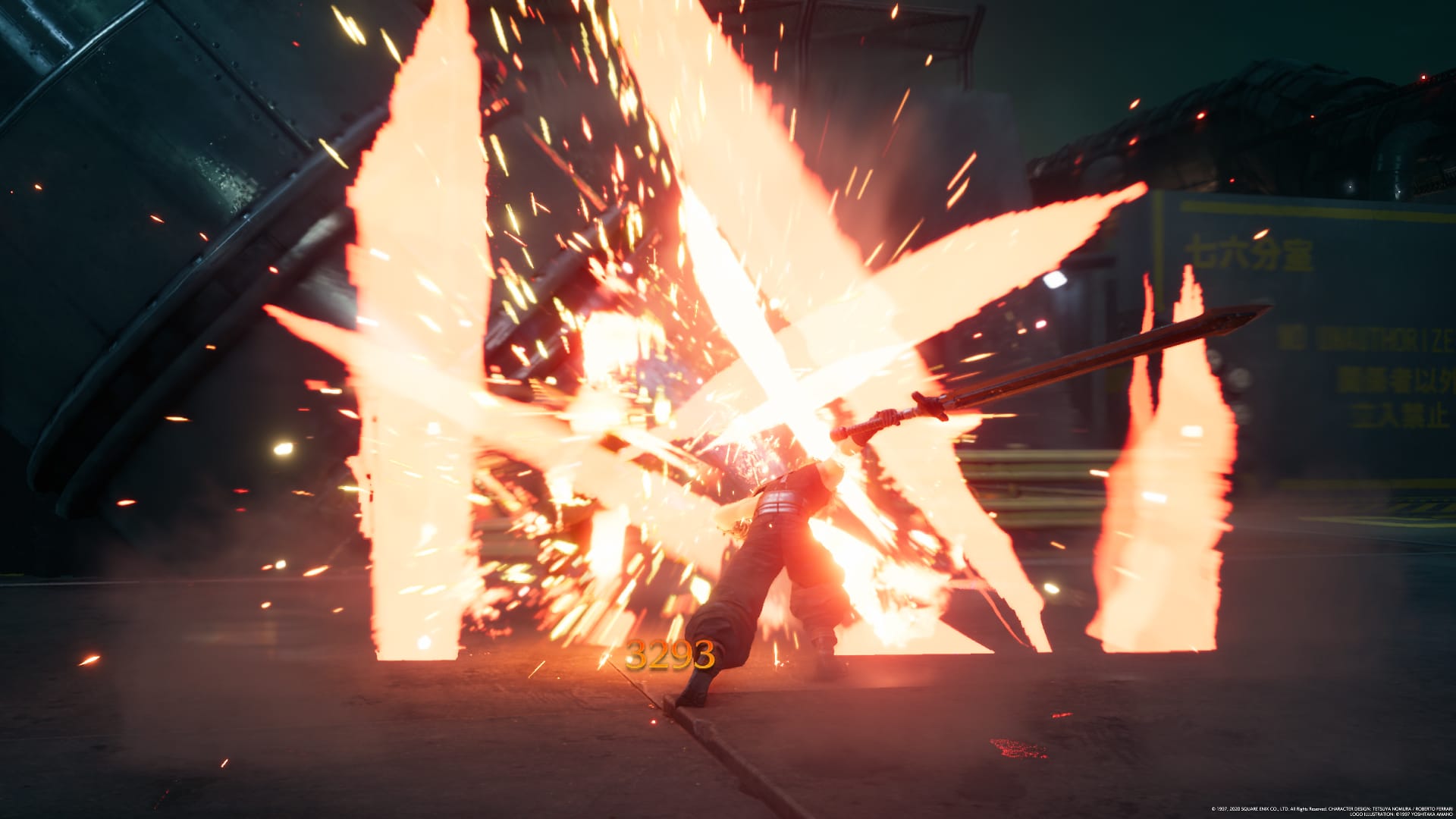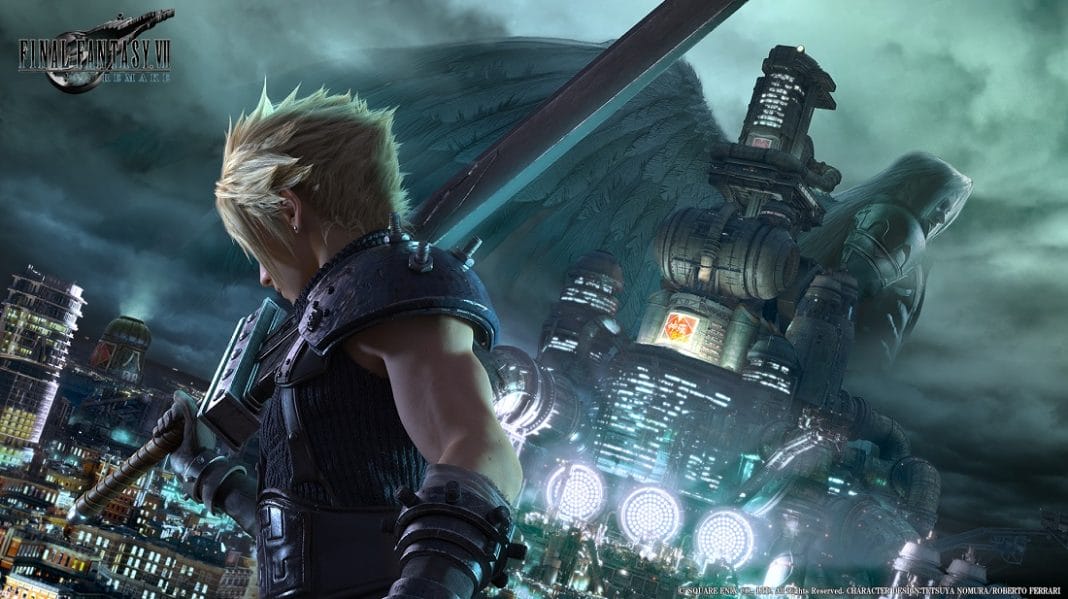As I watched the end credits roll for Final Fantasy VII Remake on the PS4 Pro after nearly 30 hours, I was left awash with a sense of relief. After a nebulous E3 2015 reveal of the game to the announcement that it would be episodic, and rumours of Final Fantasy VII Remake languishing in development hell, I’m happy to report that Square Enix has crafted a Final Fantasy that’s fantastic in almost every way.
Granted an exceptionally polished Final Fantasy VII Remake demo gave us an idea of what Square Enix’s vision for this version of its 1997 monster hit, but the full game manages to exceed those expectations.
Set in the city of Midgar, Final Fantasy VII Remake has you in the role of Cloud Strife. He’s a mercenary with a mysterious past that works with eco-terrorist group Avalanche to take down megacorp Shinra. While the original release had a wider cast of characters, memorable locations, and an overall larger scope, Final Fantasy VII Remake takes place in Midgar alone — which fans may know as only the very first section of the game. Despite this, Square Enix has managed to make Final Fantasy VII Remake feel as epic as any of its past efforts if not more so.
Part of this is due to the leap in fidelity. Powered by the Unreal Engine, Final Fantasy VII Remake looks incredible. On the PS4 Pro with supersampling enabled, small details like subtle facial cues, or large monstrous bosses, and even cats that stretch beyond the uncanny valley, it’s obvious that Square Enix actually spent the time and money to make a visually arresting game.

At the tail end of a console generation it’s tough to be enthused about a thing as superficial as graphics, but Final Fantasy VII Remake is far and away one of the best-looking titles available regardless of the platforms you have access to. Furthermore, it merges pre-rendered cut-scenes and gameplay in such a way that without its subtle camera cues, you’d be hard-pressed to tell the difference.
Not only does Final Fantasy VII Remake look good but Square Enix has re-created Midgar to have a sense of scale and space expands upon the Midgar you may have experienced in the original release. Be it the neon-lit hues of the Wall Market or the grimy sewers that lie below its slums, each area of Midgar has its own feel. From spooky, bone-chilling train graveyards to sterile almost Stepfordian corporate living quarters, the sense of variety and tone in every locale that’s crammed into Midgar is intense, different, and all too reminiscent of inequalities present in many capitalist societies today.
However not all aspects of Final Fantasy VII Remake’s innovation are tied to what you see. Under its ridiculously polished dome lies a slick combat system.
Yes, purists can battle through its many foes in turn-based mode but there’s joy to be had playing it in real-time. Although Final Fantasy VII Remake only lets you only play as Cloud, Tifa, Aerith, and Barrett (as the rest of the cast: Yuffie, Red XIII, Vincent, Cid, and Cait Sith aren’t a part of your party in this game), each of them handle differently. Tifa is a close-range combatant, attacking with a flurry of punches and kicks, Barrett hits enemies from afar with his machine gun arm, while Cloud strikes a happy medium between the two, using a gigantic sword to bridge the gap between him and his foes while Aerith’s focus on support and area of effect attacks allow your team to manoeuvre the assortment of beasts, bandits, and bosses you encounter.

This is layered with a stagger mechanic. Each enemy has a stagger gauge. Hitting one with a specific kind of magic that its susceptible to such as casting lightning on a robot, fills up its stagger gauge. When it’s full, an enemy is temporarily immobilised, allowing you to go for the jugular. Throw in some helpful abilities such as Infinite End that let you multiply damage dealt makes fights or different conditions to cause a stagger effect such as crippling various appendages of your target and you have a combat system that’s entertaining even when you start a new playthrough of the game.
In addition to this, special actions such as the aforementioned abilities or magic can’t be spammed rather you need to build up your ATB (active time battle) meter by attacking foes before you can use fire or lightning. The same goes for curative spells or items — not enough bars in your ATB gauge, you can’t use them.
Although it also means that you have to keep one eye on your health and ATB gauge. As foes get tougher towards the end of the game, with some being able to fell you in one hit, you’ll find yourself playing more cautiously than you’d like lest you want to repeat the fight second later thanks to its forgiving checkpoints.
It’s a fresh twist that makes Final Fantasy VII Remake unlike past entries in the series, improving on what we saw in Final Fantasy XV and the Kingdom Hearts games. There’s a greater amount of depth thanks to being able to tweak how your team mates behave in combat too as well as any party member being able to use summon abilities, which can save you in a pinch.
For the uninitiated, summons, magic, and certain abilities in Final Fantasy VII as well as Final Fantasy VII Remake are powered by materia, orbs of which are found in Midgar.

Each playable character can equip materia and using it is straightforward enough. However, in Final Fantasy VII Remake, summons — which allow you to call omnipotent beings to fight for you such as the fire demon Ifrit or a giant fat chocobo — have abilities such as casting colossal fire damage or dropping massive bombs that can be activated by any party member, not just the one who has the summon materia equipped that brought them onto the battle field in the first place. It’s a small but welcome change particularly in tougher moments of play.
While Final Fantasy VII Remake plays as good as it looks, it’s biggest changes are in its narrative. Without venturing into spoiler-territory, certain aspects are brilliantly fleshed out such as the many residents of Midgar you come across in your travels each with their own motivations, backstory, hopes, and dreams that fit into the overarching story well. Also, key moments from the original have been revealed earlier than fans would expect but go a long way in explaining specific details better for newbies.
Now some may think there’s little to spoil in a game that has ‘Remake’ in the title, the truth is far from it. Out of respect for those that are yet to play it all I’ll say is this: on the whole, almost every story decision in Final Fantasy VII Remake makes sense. The ramifications of a couple of late game reveals will be a point of contention amongst Final Fantasy VII Remake players. That said, I personally feel that the team working on it genuinely have the best intentions. Hopefully these are reflected in future episodes because what’s done here in terms of story has left me feeling optimistic on what to expect.

Perhaps my biggest grouses are reserved for what’s missing. For one, there’s no photo mode. A game that looks this good demands it and maybe Square Enix will oblige with a patch. Secondly, there’s no new game plus. Instead, you can replay any chapter you want if you’re looking to obtain every collectible, win every mini-game, and do every side-quest needed for the Final Fantasy VII Remake platinum trophy (while my playtime was around 30 hours, doing all of these will bump up your playtime to well above that).
And last of all, while the music of Final Fantasy VII Remake is great with hummable battle tunes and a suitably magnificent theme track, ‘J-E-N-O-V-A’, an iconic, rousing piece from Final Fantasy VII sounds off-puttingly neutered here.
Nevertheless, Final Fantasy VII Remake marks a return to form for Square Enix. It’s a brilliant reimagining of its most influential entry in the long-running franchise. If you’re a fan or a first-timer to the series, this is well worth playing.




